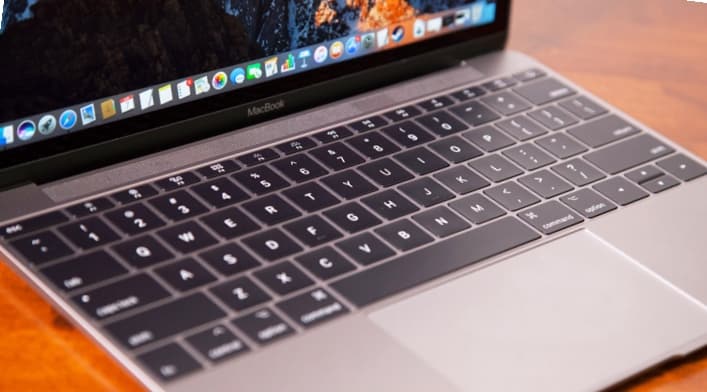A lawsuit filed in federal court claims that the keyboard used in all the MacBook Pros and MacBooks made in the past few years is defective. The plaintiffs request that this be made into a class-action lawsuit, and that Apple be required to replace all the affected keyboards at no cost to users.
The lawsuit also requests punitive damages because, as the plaintiffs claim, Apple continued to build and sell laptops with the “butterfly” keyboard even though the company knew it was defective.
The keyboard design at the canter of this controversy debuted in the 2015 MacBook, and was later used in the 2016 MacBook Pro. It’s been a part of all subsequent models.
The name “butterfly” comes from the primary internal component. On older keyboards, this looked like a pair of scissors. Apple redesigned the mechanism to look like a butterfly.

Photo: Apple
The design more evenly distributes the pressure from tapping on the keys. However, the keys get easily stuck if any particle gets into the mechanism. And repair is costly. At least, that’s the assertion behind a recall petition addressing the very same controversial keyboard. Almost 18,000 people signed the butterfly keyboard petition in just over a week.
MacBook keyboard lawsuit requests restitution, punitive damages
That’s also what lead plaintiffs Zixuan Rao and Kyle Barbaro claim in the lawsuit they filed in the U.S. District Court of Northern California.
“Thousands of consumers have experienced this defect,” their lawsuit says. “When the MacBook’s butterfly keyboard fails, the keys stick and no longer register keystrokes.”
Rao and Barbaro don’t pull any punches. Their 37-page MacBook lawsuit claims Apple knew that this design was flawed in 2015 but used it anyway, concealing the problem from the public. “Apple’s fraudulent concealment was malicious, oppressive, deliberate, intended to defraud Plaintiffs and Class members and enrich Apple,” is how they put it.
The lead plaintiffs ask the court to “award all actual, general, special, incidental, statutory, punitive, and consequential damages and restitution to which Plaintiffs and Class members are entitled.”
Specifically, they want Apple to “return to Plaintiffs and Class members all costs attributable to remedying or replacing defective MacBook laptops, including but not limited to economic losses from the purchase of replacement laptops.”
A lawsuit like this one isn’t actually a class-action yet. Rao and Barbaro asked that it be certified one, but that’s up to the court. The court will base its decision on whether a sufficient number of people have been harmed to warrant a class-action suit.


